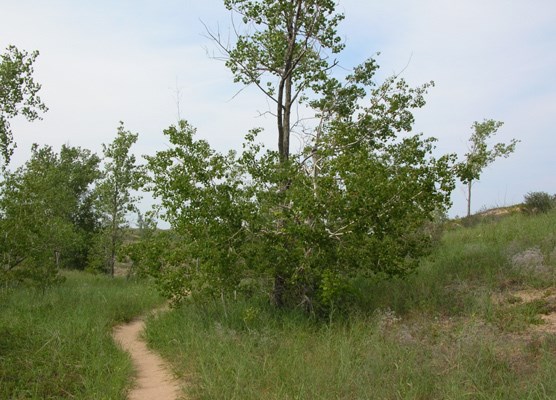|
Consider the conditions that plants must deal with on the dunes; strong sunlight; low soil fertility; drying wind action; limited soil moisture; wind erosion, which can expose root systems; and build-ups of sand which can partially or completely bury plants. Notice the cottonwood trees growing on the steep dune across the road. They are managing to survive despite their precarious position. The cottonwood is the only common tree of the dunes, and is well adapted to the dune environment. Its fast rate of growth allows it to keep pace with burial by sand. Notice that the trees are growing in a cluster. This too is typical. The cottonwood can reproduce by cloning, sprouting new trunks from roots. The network of roots helps to hold the sand in place and the tree itself acts as a windbreak. This helps to stabilize the dunes. The dense root networks of various grasses also hold the sand in place. Once the dune is stabilized, new plants can begin growing on it, plants which are not able to survive on an active dune. Common juniper, the evergreen shrub growing among the grasses, is one of the typical plants of stabilized dunes. 
Kerry Kelly 2006 |
Last updated: April 10, 2015
